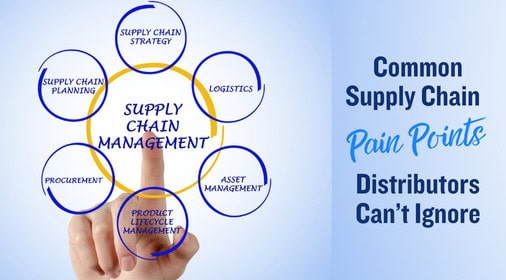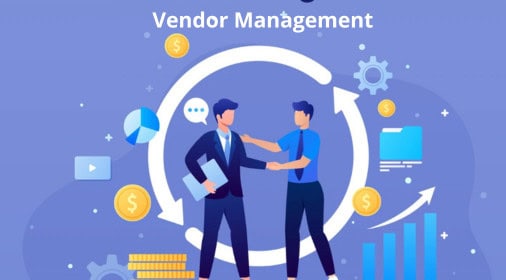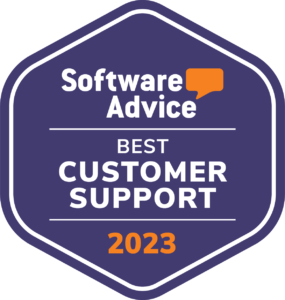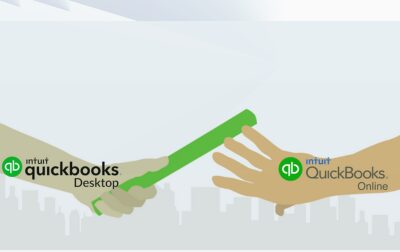Why ERP Is Essential for Year-End Financial Reporting
Year-End Financial Reports Made Easy with ERP: Steps to Ensure Accuracy
This is where an ERP system steps in, offering tools to streamline financial reporting, ensure accuracy, and save time. Let’s explore how ERP software simplifies year-end financial reporting and the steps you can take to ensure your data is accurate and compliant.
Why ERP Is Essential for Year-End Financial Reporting
An ERP system like Kechie integrates all your financial data in one place, eliminating the need for spreadsheets and manual consolidations. Here’s how it adds value during year-end reporting:
1. Centralized Data: Access financial, inventory, and operational data from a single platform.
2. Real-Time Reporting: Generate accurate, up-to-date financial reports with minimal effort.
3. Automation: Streamline tasks like account reconciliations and tax calculations.
4. Compliance Support: Ensure adherence to accounting standards and tax regulations.
5. Audit Trail: Maintain a detailed log of transactions for easy auditing.
Steps to Ensure Accuracy in Year-End Financial Reporting
1. Clean Up Your Data
-
- Why It Matters: Inconsistent or incomplete records can lead to inaccurate reports.
- How ERP Helps: Use the data validation and cleansing features in your ERP to identify and correct discrepancies.
- Tip: Regularly reconcile accounts payable and receivable, and perform month-end closing procedures to maintain accurate financial records throughout the year. This practice reduces the workload and stress associated with year-end reporting.
2. Review Chart of Accounts
-
- Why It Matters: A well-organized chart of accounts ensures that all transactions are correctly categorized.
- How ERP Helps: Modify and standardize your chart of accounts within the ERP to simplify reporting.
- Tip: If your company has grown, consider restructuring the chart of accounts to reflect new business units or products.
3. Automate Reconciliations
-
- Why It Matters: Manual reconciliations are time-consuming and prone to errors.
- How ERP Helps: Leverage automated bank reconciliations and intercompany transaction matching.
- Tip: Conduct monthly reconciliations within your ERP to identify and address discrepancies promptly.
4. Monitor Inventory Valuations
-
- Why It Matters: Inventory inaccuracies can skew your financials and impact tax filings.
- How ERP Helps: Track inventory in real-time and use automated valuation methods like FIFO, LIFO, or weighted average.
- Tip: Schedule monthly cycle counts in your ERP to identify and resolve inventory discrepancies early.
5. Generate Preliminary Reports
-
- Why It Matters: Early reports help identify discrepancies and allow time for corrections.
- How ERP Helps: Run trial balance, profit and loss, and cash flow reports directly from the system.
- Tip: Share preliminary reports with department heads for review and approval.
6. Ensure Compliance with Tax Regulations
-
- Why It Matters: Incorrect tax filings can lead to penalties and audits.
- How ERP Helps: Use tax calculation modules to automate calculations and ensure compliance with local regulations.
- Tip: Update your ERP with the latest tax codes and rates before generating reports.
7. Leverage ERP Reporting Tools
-
- Why It Matters: Detailed and customizable reports provide insights for stakeholders.
- How ERP Helps: Utilize built-in reporting templates or customize dashboards to display key financial metrics.
- Tip: Choose the right ERP with drill-down reporting capabilities and versatile export options ensures easy sharing with your team or auditors.
The Role of Kechie ERP in Financial Reporting
Kechie ERP is designed to simplify year-end financial reporting for businesses of all sizes. Here’s how it ensures accuracy and efficiency:
-
-
- Real-Time Data Access: Eliminate delays and discrepancies with up-to-date financial information.
- Customizable Reports: Tailor reports to meet the unique needs of your stakeholders and regulatory bodies.
- Audit Readiness: Maintain a clear audit trail for every transaction, ensuring transparency.
- Multi-Currency Support: Simplify reporting for businesses operating globally.
- Tax Compliance: Automate tax calculations and ensure adherence to ever-changing regulations.
-
Benefits of Using Kechie Financial Management Software for Year-End Reporting
1.Time Savings: Automating tasks like reconciliations and report generation frees up your finance team for strategic planning.
2. Improved Accuracy: Eliminate manual errors and ensure consistent financial data.
3. Compliance Assurance: Stay updated on accounting standards and tax regulations.
4. Enhanced Decision-Making: Provide stakeholders with accurate, real-time financial insights.
5. Stress-Free Audits: Simplify audits with detailed transaction histories and organized financial records.
Conclusion
Year-end financial reporting doesn’t have to be overwhelming. By leveraging the features of an ERP system like Kechie ERP, you can simplify the process, ensure accuracy, and save valuable time. Whether you are preparing for audits, setting next year’s budget, or evaluating business performance, ERP software is the tool you need to succeed.
Connect with us today, our expert team is here to guide you through the process and help you discover the transformative potential of our solutions.
Stay tuned for our series of insightful blogs—your roadmap to exploring the full potential of ERP.
What Are the Top Reasons to Invest in Equipment Maintenance Software?
What Are the Top Reasons to Invest in Equipment Maintenance Software?
Prevent Unplanned Downtime
Unplanned downtime is one of the most disruptive issues a business can face. When essential equipment breaks down unexpectedly, production grinds to a halt, often resulting in missed deadlines, increased labor costs, and unhappy customers. Equipment Maintenance Software minimizes unplanned downtime by providing tools to schedule regular preventive maintenance and track equipment performance. By proactively monitoring equipment health, EMS helps identify potential issues before they become critical, keeping production schedules intact.
Extend Equipment Lifespan
Every machine or piece of equipment has a specific lifespan. However, equipment that undergoes regular, timely maintenance lasts significantly longer than those that are neglected. EMS within Kechie ERP helps businesses keep track of maintenance schedules, ensuring equipment receives the care it needs. From regular lubrication to part replacements, EMS supports proactive maintenance, which extends equipment life, delays replacements, and reduces capital expenditures over time.
Increase Efficiency and Productivity
Effective equipment maintenance is integral to maintaining a productive work environment. EMS simplifies maintenance workflows, from work order creation to task assignment and completion tracking. With mobile access to EMS, technicians can quickly access work orders, log updates, and view repair histories, reducing delays and minimizing the need for manual paperwork. This streamlined approach allows employees to focus on their tasks and reduces time spent on resolving equipment issues, ultimately improving operational efficiency.
Reduce Maintenance Costs
EMS helps organizations make better financial decisions regarding maintenance costs. By reducing the frequency of emergency repairs through preventive maintenance, businesses save on repair expenses and avoid costly overtime labor required to address last-minute issues. EMS also supports inventory management for spare parts, helping companies optimize parts stock levels, reduce excess inventory, and avoid expedited shipping costs for out-of-stock parts.
Maintain Safety and Compliance Standards
Workplace safety and regulatory compliance are vital considerations for businesses that use heavy equipment. A well-maintained machine is less likely to malfunction and cause safety hazards, ensuring a safer work environment for employees. EMS helps companies track and document all maintenance activities, creating a digital log that proves regulatory compliance during audits. Staying compliant not only avoids penalties but also fosters a culture of safety and responsibility in the workplace.
Access Valuable Data and Analytics
EMS provides valuable insights into equipment performance and maintenance history. With detailed data on repair frequency, maintenance costs, and downtime, businesses can make informed decisions about asset utilization and capital investment. EMS analytics can reveal trends that inform long-term maintenance strategies, such as identifying underperforming equipment or recognizing the ideal time for replacements. This data-driven approach enables businesses to optimize asset management, budgeting, and planning.
Improve Scheduling and Resource Allocation
EMS simplifies maintenance scheduling and resource allocation, ensuring that the right technicians, tools, and spare parts are available when needed. With Kechie EMS, companies can create automated maintenance schedules based on factors like usage, time, or performance metrics. This level of organization prevents over-scheduling, avoids unnecessary maintenance tasks, and ensures that resources are effectively used.
Enhance Communication Across Teams
For maintenance tasks to be completed effectively, clear communication between departments is crucial. Kechie EMS allows teams to centralize maintenance requests, updates, and work orders on a single platform accessible to all involved parties. This ensures that employees from different departments—such as production, logistics, and maintenance—have a unified view of equipment status, maintenance schedules, and any upcoming tasks.
Conclusion
Staying ahead in a competitive market requires smart solutions like Kechie EMS. This comprehensive Equipment Maintenance Software helps businesses cut expenses, improve efficiency, and foster safe working environments. Whether it’s reducing downtime, maximizing asset longevity, or simplifying communication, Kechie EMS equips your business for smooth operations and lasting success.
Connect with us today, our expert team is here to guide you through the process and help you discover the transformative potential of our solutions.
Stay tuned for our series of insightful blogs—your roadmap to exploring the full potential of ERP.
Are These ERP Myths Holding You Back?
Are These ERP Myths Holding You Back? 6 Myths Busted!
When it comes to Enterprise Resource Planning (ERP) systems, there’s a lot of buzz. ERP is often hailed as the backbone of modern business operations, streamlining everything from inventory management to finance. But for all the praise, there are still many myths circulating that can leave businesses hesitant or misinformed. In this post, we’ll tackle the biggest myths about ERP and shed light on what they really bring to the table. By dispelling these misconceptions, we hope you’ll see why an ERP solution could be a game-changer for your business.
Reality Check: ERPs aren’t exclusive to Fortune 500 giants! Many small to medium-sized businesses (SMBs) think they don’t need ERP, but that couldn’t be further from the truth. In fact, SMBs often benefit significantly from ERP implementation because it helps them manage their resources more efficiently as they grow. Today’s ERP systems, like Kechie ERP, are scalable, designed to grow with your business. They are accessible, flexible, and customizable, which means small businesses can leverage the same high-level tools without the massive price tag.
Myth #2: ERP Systems Are Too Expensive
Reality Check: Yes, ERP systems were once prohibitively costly, especially when businesses had to invest in expensive hardware and infrastructure. But with cloud-based ERP solutions like Kechie ERP, the landscape has changed. Cloud-based ERP systems are more affordable and accessible, offering subscription-based models that eliminate high upfront costs. This makes ERP solutions a sound investment with high ROI, where the savings in time, accuracy, and efficiency often outweigh the costs.
Myth #3: Implementing ERP Takes Too Long
Reality Check: Implementing any new system requires planning, but modern ERPs are designed to be deployed much faster than the legacy systems of the past. With streamlined implementation processes and guided onboarding, businesses can often see ERP systems up and running in a matter of weeks rather than years. A solution like Kechie ERP, with its user-friendly interface, can quickly integrate with existing systems, minimizing disruption to business operations.
Myth #4: ERPs Are Overly Complex
Reality Check: ERPs have a reputation for being difficult to understand and navigate, but that’s no longer the case. Today’s ERP solutions emphasize simplicity and intuitive user interfaces that reduce the learning curve. Kechie ERP, for instance, focuses on a simplified user experience with an intuitive design, making it easy for team members across departments to get on board quickly.
Myth #5: ERPs Are Only Useful for Managing Inventory
Reality Check: While inventory management is a crucial ERP feature, it’s only one piece of the puzzle. A robust ERP system integrates all critical business functions—finance, HR, sales, customer service, supply chain management, and more—into one cohesive platform. By centralizing data, ERP solutions empower your team to make data-driven decisions, improve efficiency, and foster collaboration across departments. So, while inventory is a major component, the value an ERP offers goes far beyond that.
Myth #6: ERP Systems Are Outdated
Reality Check: Some believe ERPs are outdated relics of the tech world, but modern ERP systems continue to evolve. Today’s ERP solutions are designed with the latest cloud technology, AI-driven insights, and mobile accessibility, making them more relevant than ever in our digital age. Kechie ERP, for example, incorporates advanced cloud capabilities, allowing users to access the system from anywhere, ensuring businesses stay agile and connected.
Conclusion
Navigating the world of ERP systems can be daunting, especially with so many myths muddying the waters. But as technology continues to advance, ERPs are becoming more accessible, flexible, and beneficial for businesses of all sizes and types. Investing in a solution like Kechie ERP can help you streamline operations, gain valuable insights, and future-proof your business for sustained success.
Connect with us today, our expert team is here to guide you through the process and help you discover the transformative potential of our solutions.
Stay tuned for our series of insightful blogs—your roadmap to exploring the full potential of ERP.
Common Supply Chain Pain Points for Distributors
What are Common Supply Chain Pain Points Distributors Can’t Ignore?
1. Inaccurate Demand Forecasting
The inability to forecast demand accurately leads to overstock or stockouts, both of which negatively impact profitability. Advanced ERP such as Kechie ERP equipped with AI-driven forecasting capabilities can help distributors manage inventory more effectively.
2. Supplier Issues
Managing multiple suppliers can quickly become overwhelming, especially when performance varies. A well-integrated vendor relationship management system can help monitor supplier performance and ensure accountability.
3. Order Management Complexities
With orders coming from various sources—wholesalers, direct buyers, or online platforms—distributors face challenges in streamlining the order process. An automated ERP order management system reduces errors and boosts fulfillment efficiency.
4. Returns & RMAs
When returns aren't handled smoothly, they can disrupt inventory levels and cause delays. An automated RMA process helps streamline return handling, improving warehouse efficiency and customer satisfaction.
5. Inefficient Inventory Control
The challenge of maintaining optimal stock levels continues to plague distributors. Investing in an ERP system like Kechie offers real-time inventory tracking helps to minimize human error and helps manage stock more efficiently.
6. High Logistics Costs
The rising cost of logistics—from fuel to labor shortages—creates ongoing pressure for distributors. Route optimization and transportation management systems can alleviate some of these challenges by improving efficiency and reducing costs.
7. Data Visibility
Without a clear picture of what’s happening in real-time, distributors are left making decisions reactively. A data-driven ERP system with reporting and analytics capabilities can offer transparency into every aspect of the supply chain.
8. CRM Challenges
Many distributors rely on disparate CRM systems that fail to communicate with other software. This disconnect can lead to inefficiencies and lost sales opportunities. Kechie ERP integrated with CRM functionality offers a comprehensive view of customer interactions.
9. Multiple Software Platforms
Distributors often find themselves using various applications to manage operations, leading to data silos and inefficiencies. Centralizing functions into a single ERP system can streamline operations and improve data flow.
10. Compliance Challenges
New regulations can throw a wrench in the smooth functioning of a supply chain. Distributors must remain compliant across all regions they serve. Automated compliance features in modern ERP systems can ensure timely adherence to ever-evolving laws.
Conclusion
To address these challenges effectively, distributors need a solution that integrates every aspect of their operations. Kechie ERP offers a robust platform that combines order management, inventory control, CRM, and compliance, empowering distributors to optimize their supply chain and drive sustainable growth.
Connect with us today, our expert team is here to guide you through the process and help you discover the transformative potential of our solutions.
Stay tuned for our series of insightful blogs—your roadmap to exploring the full potential of ERP.
What is Vendor Relationship Management?
What is Vendor Relationship Management (VRM) and Why It’s Essential for Your ERP and Inventory Software?
Let’s explore why these features are crucial for optimizing supplier relationships and driving business growth.
Why is Vendor Relationship Management Important?
1. Better Communication with Suppliers
Clear communication is the key to building strong supplier relationships. VRM tools within Kechie ERP and inventory system help streamline communication by supporting multiple contact management. This ensures that businesses can track and communicate with various people within a vendor’s organization, whether it's for accounting, sales, or support. Having all supplier contacts organized in one place makes it easier to collaborate and avoid confusion.
2. Vendor Contract Management
Vendor contracts are the backbone of supplier relationships, detailing terms, pricing, and obligations. Managing these contracts manually can be a challenge, but Kechie ERP with VRM tools streamlines automated contract tracking. This ensures that you stay on top of renewals, performance expectations, and compliance, helping you avoid missed deadlines or financial penalties.
3. Vendor GL Setup for Accurate Financial Management
Vendor GL setup is crucial for managing your finances effectively. In VRM systems integrated with Kechie ERP software, you can assign vendors to specific general ledger accounts. This allows businesses to track expenses, costs, and payments against the appropriate financial accounts. By automating this process, you reduce errors and improve financial reporting accuracy.
4. Emailing from the Software
VRM in Kechie ERP system also enables direct email communication with vendors from the software. This feature allows you to send purchase orders, contracts, invoices, or any other documents directly to suppliers without needing to switch between platforms. All communication is logged within Kechie ERP system, so you have a complete history of email interactions at your fingertips.
5. Managing Multiple Locations
Many businesses deal with vendors that have multiple locations. Whether you’re sourcing from different warehouses or shipping to various branches, VRM tools help track and manage vendors across multiple locations. This ensures that you have complete visibility into where products are coming from and going to, enabling smoother logistics and more effective supply chain management.
6. Monitor Supplier Performance
Tracking supplier performance is key to making informed decisions. Kechie ERP with VRM capability helps you monitor metrics like delivery times, product quality, and order consistency. This data is invaluable for evaluating suppliers, resolving disputes, or negotiating better terms.
7. Add Notes for Better Vendor Tracking
Keeping track of the nuances in vendor relationships is often overlooked, but it can make all the difference. VRM integrated with Kechie ERP system allows users to add notes to vendor profiles, capturing important details such as pricing discussions, special requests, or any unique preferences the supplier might have. These notes provide context for future interactions and ensure that important details are not lost.
8. Stronger Vendor Relationships
All this information centralized in Kechie ERP and VRM tool helps you maintain transparency and ensure vendors are well-informed and aligned with your business goals. Better communication, well-managed contracts, and organized vendor data lead to stronger, more reliable partnerships that benefit both parties in the long run.
9. Risk Management
The VRM tool within a system like Kechie ERP, you can track vendor compliance with industry standards and other regulatory requirements. This helps you assess risks, avoid supply chain disruptions, and maintain business continuity even during unforeseen circumstances.
Why You Need VRM Integrated with Your ERP and Inventory Software
Integrating VRM with a system like Kechie ERP or Kechie Inventory Software enhances supplier management in significant ways:
Centralized Data and Contact Management:
When VRM is part of your ERP like Kechie System, you can store all vendor data in one place, including GL account details, multiple contact information, contract data, and notes. This ensures consistency and makes it easier to access important information across departments.
Automated Workflows and Communication:
By automating key tasks—like sending emails, creating purchase orders, or tracking shipments—an integrated VRM system improves operational efficiency. The ability to email vendors directly from Kechie ERP software, while keeping all communication logged, enhances productivity and eliminates the need for external tools.
Multi-Location and Performance Tracking:
Managing vendors with multiple locations becomes seamless. Kechie ERP integrated with VRM tool allows you to track deliveries and orders across various sites, giving you a real-time overview of supply chain performance and logistical coordination.
Scalability and Real-Time Insights:
As your business expands, managing multiple vendors and locations can become increasingly complex. Kechie ERP integrated VRM systems scale with your business, ensuring that supplier management remains efficient. Real-time insights into vendor performance, financials, and procurement status help you make informed decisions quickly.
Conclusion
Vendor Relationship Management, when integrated with Kechie ERP and Kechie Inventory software, is essential for optimizing supplier communication, managing contracts, automating financial tracking, and improving overall procurement processes. Kechie ERP offers features such as vendor GL setup, multiple contact management, email integration, and multi-location handling to ensure your business can build stronger supplier relationships, minimize risks, and scale efficiently. This not only streamlines operations but also positions your business for long-term success in today’s competitive market.
Navigating the Complex World of Logistics: Strategies for Success
Navigating the Complex World of Logistics: Strategies for Success
The effectiveness of your logistics can mean the difference between skyrocketing profits and lost opportunities in a world where everything is connected more and more. Effective logistics management is crucial for businesses looking to streamline operations, reduce costs, and enhance customer satisfaction. Whether you’re managing a global supply chain or a local delivery service, mastering logistics can lead to significant competitive advantages.
What is Logistics Management?
Logistics management encompasses the planning, implementation, and control of the flow of goods, services, and information from origin to consumption. This complex process involves transportation, warehousing, inventory management, and order fulfillment, all aimed at ensuring that products reach customers in a timely and cost-effective manner.
Why is Logistics Management Important?
1. Cost Reduction: Efficient logistics can significantly lower transportation and warehousing costs, enhancing overall profitability.
2. Customer Satisfaction: Timely and accurate delivery is key to customer loyalty. Streamlined logistics ensure that customers receive their orders on time and in perfect condition.
3. Competitive Advantage: Companies that master logistics often outperform their competitors by offering better service levels, faster deliveries, and more responsive supply chains.
Key Strategies for Effective Logistics Management
1. Leverage Technology: Utilize logistics software and tools for real-time tracking, inventory management, and data analytics. This helps streamline processes and improve decision-making.
2. Optimize Your Supply Chain: Regularly assess and refine your supply chain network to enhance efficiency. Identify bottlenecks and seek opportunities for improvement.
3. Build Strong Relationships with Partners: Collaborating closely with suppliers, carriers, and other partners can lead to smoother operations and better problem-solving.
4. Focus on Sustainability: Implement eco-friendly practices in your logistics operations. Not only does this reduce environmental impact, but it can also appeal to socially conscious consumers.
5. Train Your Team: Invest in training for your logistics staff to ensure they are equipped with the latest best practices and technologies.
Streamlining Your Logistics for Success
Navigating the complexities of logistics is essential for any business striving for success in today’s market. By implementing effective strategies and adopting technology available in robust ERP Systems, you can optimize your logistics processes, reduce costs, and enhance customer satisfaction. In a world where speed and efficiency are important, managing logistics is not just an option—it’s a necessity for growth.
Transforming Logistics with Kechie ERP Solutions
To take your logistics management to the next level, consider implementing a fully integrated ERP system like Kechie ERP. This advanced tool can streamline your logistics operations by centralizing information and automating critical processes. With Kechie ERP, you can:
1. Enhance Visibility: Gain access to real-time data on inventory levels, shipment statuses, and supplier performance. This clarity enables you to make informed decisions swiftly, ensuring that your logistics operations run smoothly and effectively.
2. Optimize Your Processes: Automate routine logistics tasks such as order tracking and inventory management. This automation frees your team to concentrate on strategic planning and problem-solving, enhancing overall productivity.
3. Improve Collaboration Across Teams: Foster seamless communication between departments and external partners. With everyone aligned, you can work together toward common goals, driving efficiency and reducing potential delays.
4. Drive Cost Efficiency: Utilize logistics data to pinpoint inefficiencies and identify opportunities for cost reduction. This insight helps you optimize your operations and improve your bottom line.
5. Support Your Sustainability Initiatives: Leverage advanced analytics to assess and select eco-friendly logistics options. This commitment to sustainable practices reinforces your organization’s values and enhances your reputation in the market.
By entering detailed logistics data into Kechie ERP System, businesses can gain real-time view of their supply chain operations, from procurement to fulfillment. Kechie ERP seamlessly connects all modules, transforming logistics from a reactive function to a proactive one–driving efficiency, enhancing customer satisfaction, and gaining a significant competitive edge in the marketplace.
Connect with us today, our expert team is here to guide you through the process and help you discover the transformative potential of our solutions.
Stay tuned for our series of insightful blogs—your roadmap to exploring the full potential of ERP.
In This Article
-Why is Logistics Management Important?
• Cost Reduction
• Customer Satisfaction
• Competitive Advantage
-Key Strategies for Effective Logistics Management
• Leverage Technology
• Optimize Your Supply Chain
• Build Strong Relationships with Partners
• Focus on Sustainability
• Train Your Team
-Streamlining Your Logistics for Success
-Transforming Logistics with Kechie ERP Solutions
•Enhance Visibility
•Optimize Your Processes
•Improve Collaboration Across Teams
•Drive Cost Efficiency
•Support Your Sustainability Initiatives
QuickBooks Desktop is Phasing Out -Tips for Transitioning to QuickBooks Online
The State of QuickBooks Desktop – Tips for Transitioning to QuickBooks Online
For years, QuickBooks Desktop has been the trusted accounting software for businesses of all sizes. But as the world of accounting evolves with the rise of cloud computing, QuickBooks Online (QBO) is becoming the go-to solution for companies seeking real-time collaboration, mobility, and scalability.
With over 80% market share in the U.S. small business accounting segment, QuickBooks remains a dominant player. However, Intuit has announced that support for QuickBooks Desktop 2022 will end in May 2025, making it critical for businesses to plan their transition to QuickBooks Online. In this blog, we’ll explore the consequences of not transitioning by the deadline, how to ensure a smooth migration, and an alternative solution for businesses needing more advanced functionality than QBO can offer.
With over 80% market share in the U.S. small business accounting segment, QuickBooks remains a dominant player. However, Intuit has announced that support for QuickBooks Desktop will end in May 2025, making it critical for businesses to plan their transition to QuickBooks Online. In this blog, we’ll explore the consequences of not transitioning by the deadline, how to ensure a smooth migration, and an alternative solution for businesses needing more advanced functionality than QBO can offer.
Why Transition from QuickBooks Desktop to QuickBooks Online?
QuickBooks Online offers numerous benefits for modern businesses. With QBO, you can:
- Access your financial data from anywhere, anytime, thanks to cloud-based storage.
- Collaborate in real time with your team, no matter where they’re located.
- Automatically back up your data and receive regular software updates.
- Integrate with hundreds of apps and tools that boost operational efficiency.
Currently, 7 million businesses rely on QuickBooks Online, making it the most popular cloud accounting solution in the U.S. However, businesses that stick with QuickBooks Desktop past the May 2025 deadline will face significant risks, including security vulnerabilities, lack of support, and higher costs for rushed migrations.
The Consequences of Not Transitioning by May 2025
After May 2025, Intuit will stop supporting QuickBooks Desktop. Here’s what that means for your business if you don’t make the switch in time:
1. Security Risks: Without updates and patches, your financial data becomes vulnerable to cyber threats.
2. Loss of Technical Support: If something goes wrong, you won’t have access to QuickBooks customer support to help troubleshoot issues.
3. Software Incompatibility: QuickBooks Desktop will become harder to integrate with modern apps and banking platforms, making it less functional over time.
4. Increased Costs: A last-minute transition could require additional resources, driving up migration costs.
The transition to QBO is not just about staying supported—it's about embracing a system designed for today’s business needs.
How to Ensure a Smooth Transition to QuickBooks Online
Migrating to QBO doesn’t have to be difficult if you prepare properly. Here are a few best practices to make your transition seamless:
1. Evaluate Your Business Needs: Determine if QBO offers all the features you need for your industry, such as multi-currency support, advanced reporting, or inventory management.
2. Backup Your Data: Before starting the migration, ensure all of your QuickBooks Desktop data is securely backed up to avoid any data loss.
3. Choose the Right Plan: QuickBooks Online offers multiple subscription tiers. Make sure to pick the one that best matches your business needs.
4. Train Your Team: Get your team up to speed on how to use QuickBooks Online by offering training sessions before you fully migrate.
Need More Advanced Features? Consider Kechie ERP
While QuickBooks Online is a great option for many businesses, it may not have all the features your company requires. If you need more advanced functionality, like deeper reporting, more robust inventory management, or industry-specific tools, Kechie ERP is a powerful alternative.
One of the standout benefits of Kechie ERP is its two-way sync with QuickBooks Online. This seamless integration ensures that data flows smoothly between Kechie ERP and QBO, eliminating the need for manual data entry or duplicate records. By automating these processes, you save time, reduce errors, and keep your operations running smoothly.
With Kechie ERP, you can take advantage of advanced functionality while maintaining all the benefits of QuickBooks Online. You get the best of both worlds—scalability, flexibility, and cloud-based access with the added power of Kechie ERP’s enhanced features.
Conclusion
The countdown to the May 2025 QuickBooks Desktop deadline has begun. Now is the time to start planning your transition to QuickBooks Online. By acting early, you can avoid the risks associated with outdated software, ensure your data is secure, and future-proof your accounting operations.
If you’re looking for more advanced features, consider Kechie ERP, which integrates seamlessly with QuickBooks Online. The two-way sync between Kechie ERP and QBO helps eliminate manual work, saving you time and reducing costly mistakes.
Connect with us today, our expert team is here to guide you through the process and help you discover the transformative potential of our solutions.
Stay tuned for our series of insightful blogs—your roadmap to exploring the full potential of ERP.
What is an RMA and Why Does It Matter?
What Is An RMA and Why Does It Matter?
An RMA (Return Merchandise Authorization) is a system that allows customers to return products in a structured way, ensuring everything runs smoothly. Whether you're a small retailer or a large corporation, having an RMA process in place helps streamline returns, reduces headaches, and makes sure your customers feel taken care of.
Breaking Down the RMA Process
Here’s how a typical RMA process can be enhanced with Kechie ERP:
1. Customer Request: The customer initiates a return request due to defects, wrong sizing, or other issues. With Kechie ERP, this request is automatically logged into the system, streamlining communication and tracking.
2. Authorization: Once the business verifies the request against the return policy, Kechie ERP generates and issues an RMA number automatically, ensuring accuracy and efficiency.
3. Return Shipping: The customer ships the product back, clearly labeling it with the RMA number. Kechie ERP tracks the shipment, updating its status in real-time.
4. Inspection & Resolution: When the item is received, it is inspected, and Kechie ERP triggers the next steps. If the return meets the criteria, the system processes a refund or initiates a replacement, updating the customer throughout the process.
This process helps businesses keep track of returns and makes it easier to manage inventory. It also gives customers confidence that their return will be handled quickly and fairly.
Why an RMA System is a Must-Have for Businesses
A well-managed RMA system, like the one in Kechie ERP, can make all the difference. Here’s why:
- Simplifies Returns: Without an RMA, returns can become a chaotic mess. Kechie ERP streamlines the return process, making it easier for both you and your customers.
- Reduced Fraud Risk: Tracking each return with an RMA number reduces the risk of fraudulent claims.
- Improves Customer Experience: A seamless return process with Kechie ERP leads to happier customers, and increases loyalty.
- Keeps Inventory in Check: Kechie ERP’s RMA tracking returns means you’re less likely to end up with stock discrepancies or missing items.
How RMA Software Can Streamline Your Returns
As businesses grow, managing returns manually becomes more challenging. That’s where RMA software comes in. With the right tool, you can automate the process, ensuring faster response times and fewer mistakes.
Kechie ERP provides full automation in your RMA process, making the whole return cycle—from request to resolution—a breeze. Kechie is fully integrated, so all your transactions are done in real-time and all the relevant modules are updated, from issuing credits to customers in the accounting module to replacements/cross shipments in logistics, are done for you in the background. This not only saves time but also ensures consistency across your business operations.
Conclusion: RMA is More Than Just a Number
At its core, an RMA system is about making returns easier for everyone involved. For businesses, it provides better control and visibility over returns, and for customers, it ensures a clear, straightforward process. Whether you're handling a handful of returns or hundreds, having a solid RMA process in place is crucial for keeping operations running smoothly.
Connect with us today, our expert team is here to guide you through the process and help you discover the transformative potential of our solutions.
Stay tuned for our series of insightful blogs—your roadmap to exploring the full potential of ERP.
How KPIs Can Improve Operations with ERP Software.
How Key Performance Indicators (KPIs) Can Improve Operations with ERP Software
What Are KPIs?
A KPI is a number or metric that tracks how well your business is doing in a certain area. For example, you could measure how fast orders are fulfilled, how satisfied your customers are, or how much revenue your business is generating. These metrics give you clear data on what’s working and what needs improvement.
Some common KPIs include:
- Revenue Growth: Tracks how much your income is increasing over time.
- Order Fulfillment Time: Measures how quickly you process and ship customer orders.
- Customer Satisfaction: Assesses how happy customers are with your service.
How ERP Software Helps Track KPIs
ERP software, like Kechie ERP, is designed to manage and automate many areas of your business, from inventory and order management to finance and HR. One of the key benefits of Kechie ERP software is its ability to track and analyze KPIs in real time. Here’s how ERP and KPIs work together:
1. Centralized Data
With Kechie ERP software, all your business data is stored in one system. This makes it easy to track KPIs across departments like sales, inventory, and finance without switching between different tools.
2. Automated Tracking
Kechie ERP automatically collect data and generate KPI reports. You can monitor key metrics like inventory turnover, production efficiency, and sales performance without manually updating spreadsheets.
3. Real-Time Insights
With real-time data available through Kechie ERP, you can track KPIs instantly. This allows for faster decision-making and quick responses to any issues that arise, helping to keep your operations running smoothly.
4. Customizable Dashboards
Kechie ERP software offers customizable dashboards where you can display the KPIs that matter most to your business. This makes it easy for you and your team to stay focused on important performance goals.
Why KPIs Are Important for ERP-Driven Operations
Within Kechie ERP software, KPIs play a crucial role in improving operational efficiency. Here’s why they matter:
1. Better Decision-Making
Kechie ERP provide detailed data on every aspect of your business. By analyzing KPIs included in our software, you can make informed, data-driven decisions that improve processes and boost profitability.
2. Improved Operational Efficiency
Tracking KPIs like order fulfillment time or inventory turnover helps you identify areas where processes are slow or inefficient. Kechie ERP gives you the tools to adjust workflows and optimize operations based on these metrics.
3. Goal Alignment
Kechie ERP helps align your KPIs with your business goals. For example, if your goal is to reduce costs, you can track KPIs related to production efficiency and material usage. Kechie ERP will provide real-time insights into how well you are achieving those goals.
4. Accountability Across Teams
With a robust software like Kechie ERP, you can assign specific KPIs to departments or team members. This promotes accountability and ensures everyone is working toward the same objectives, like improving productivity or reducing waste.
Examples of KPIs to Track in ERP Software
Here are some key KPIs that Kechie ERP can help you monitor:
1. Inventory Turnover: Tracks how quickly you sell and restock inventory, helping to optimize stock levels.
2. Order Fulfillment Time: Measures how long it takes to process and ship customer orders, which is key for customer satisfaction.
3. Production Efficiency: Tracks how effectively your resources are being used in manufacturing.
4. Employee Productivity: Measures how much work is done by each employee to identify areas for improvement.
Conclusion: Boost Your Business with Kechie ERP and KPIs
KPIs are vital for understanding how your business is performing, and Kechie ERP software makes it easier to track and improve those metrics. By combining KPIs with the power of Kechie ERP system, you gain real-time insights, automated tracking, and better control over your operations. This helps you make smarter decisions and run a more efficient business.
Start using KPIs within Kechie ERP today to improve operations, boost productivity, and drive long-term success.
Connect with us today, our expert team is here to guide you through the process and help you discover the transformative potential of our solutions.
Stay tuned for our series of insightful blogs—your roadmap to exploring the full potential of ERP.
What Is an Item Type and How Is It Managed Within ERP Software?
What Is an Item Type and How Is It Managed Within ERP Software?
What are the different types of items you need to know about in your business?
1. Standard Items
Standard items are the backbone of most inventory systems. These are individual products that are tracked based on quantity. With ERP software like Kechie ERP, managing standard items becomes a breeze. The system tracks every unit, ensuring accurate stock levels and preventing both overstocking and stockouts.
2. Serialized Items
Serialized items are products that require unique serial numbers for tracking purposes. These are often high-value or regulated items, like electronics or medical devices. With the help of Kechie ERP software, businesses can track each item individually, ensuring compliance with industry regulations and providing detailed records of each item's history.
3. Lot-Tracked Items
Lot-tracked items are grouped by batch or production run, often with an expiration date. This is particularly important in industries like food and pharmaceuticals, where traceability is crucial. A system like Kechie ERP can efficiently manage lot numbers, making it easier to track product batches throughout the supply chain and recall items if necessary.
4. Perishable Items
Perishable items have a limited shelf life and require careful management to minimize waste. Kechie ERP helps track expiration dates and manage stock rotation to ensure freshness and compliance, especially in industries like food and pharmaceuticals.
5. Service Items
Service items represent services rather than physical goods, such as consulting or repair services. Kechie ERP system can track service hours, manage service contracts, and ensure accurate billing and resource allocation.
6. Digital Items
Digital items include software, licenses, or digital content. A system like Kechie ERP helps manage these items by tracking licenses, usage, and updates, ensuring compliance and efficient distribution.
7. Consumables
Consumables are items that are used up or discarded after use, such as office supplies, packaging materials, or raw materials in manufacturing. Proper management of consumables with Kechie ERP system ensures that you always have the necessary supplies on hand, avoiding production delays or stockouts.
8. Bundles or Kits
Bundles or kits are combinations of individual items sold together as a package. Managing these in Kechie ERP system allows businesses to track each component of the bundle separately while also managing the bundle as a single SKU. This is particularly useful for promotions or product sets.
9. Manufactured Items
Manufactured items are products created from raw materials and components. Kechie ERP software streamlines the production process by managing the bill of materials (BOM), tracking work in progress (WIP), and ensuring that all components are available when needed. This leads to increased efficiency and reduced production costs.
Conclusion
An ERP or inventory management software is an essential tool for managing the diverse range of items or SKUs in your business. Whether you’re dealing with standard products, serialized items, or complex bundles, Kechie ERP can help you maintain control, ensure accuracy, and optimize your operations.
Investing in a robust ERP solution like Kechie ERP can transform how you manage your inventory, leading to greater efficiency and profitability. Start optimizing your inventory today!
Connect with us today, our expert team is here to guide you through the process and help you discover the transformative potential of our solutions.






















